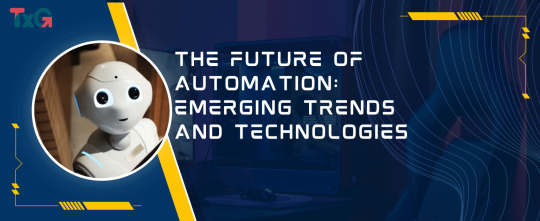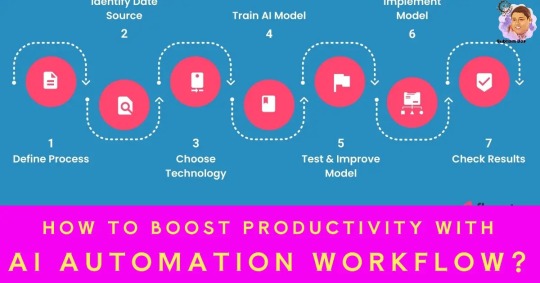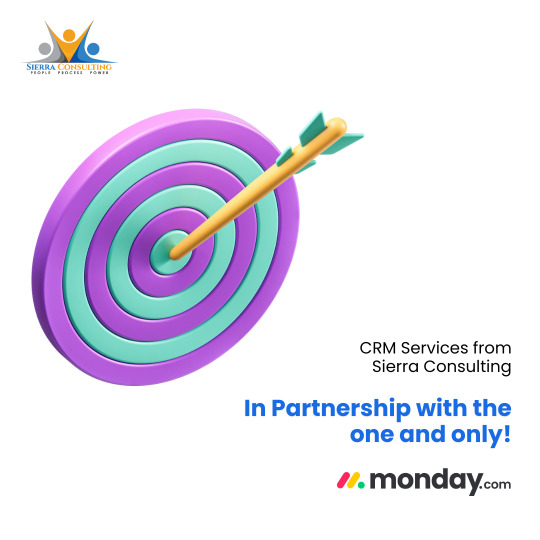#workflow automation benefits
Explore tagged Tumblr posts
Text

Looking for the Best Contract Management Software in 2025? Meet WeSignature—where contracts move at the speed of business. From digital signatures to full audit trails, WeSignature makes it effortless to manage, sign, and track agreements in one sleek platform. Say goodbye to manual follow-ups and hello to automation that saves time and builds trust. With full compliance to electronic signature laws by state and features that make your signature transparent, WeSignature brings clarity and security to every deal. Whether you’re a startup or scaling enterprise, this is contract management that just works.
1 note
·
View note
Text
Stay ahead with the latest trends in AI agents. Learn how these autonomous tools are reshaping industries, from finance to healthcare.

Discover how AI agents are transforming industries with intelligent automation, boosting efficiency, and enabling smarter decision-making in 2025 and beyond.
#AI agents#autonomous AI agents#intelligent agents#AI automation#AI-powered tools#artificial intelligence agents#AI agents in business#AI customer service agents#AI agents for startups#AI automation for enterprises#AI virtual assistants#workflow automation#generative AI#AI trends 2025#future of AI#machine learning agents#conversational AI#AI task automation#how AI agents work#benefits of AI agents#best AI agents for productivity#using AI agents in business#AI agents for process automation#top AI agents tools
1 note
·
View note
Text

Discover how Salesforce helps professional services enhance client engagement, automate workflows, and boost ROI in 2025 with AI-powered CRM solutions.
Read more: https://salesforcetechmatrix.blogspot.com/2025/03/maximizing-client-engagement-with.html
#Salesforce for professional services#client engagement strategies#Salesforce CRM 2025#Salesforce implementation partner#AI-driven CRM tools#client retention Salesforce#automate workflows#Salesforce benefits for consulting firms#professional services CRM#Salesforce Marketing Cloud
0 notes
Text
Workflow Automation: A Technical Guide to Streamlining Business Processes
In an era where digital transformation is crucial for business success, workflow automation has emerged as a key strategy to enhance efficiency, eliminate manual errors, and optimize processes. This guide provides an in-depth technical understanding of automating workflows, explores the architecture of automation tools like Power Automate workflow, and highlights the benefits of workflow automation from a technical perspective.
What is Workflow Automation?
Workflow automation is the process of using software to define, execute, and manage business processes automatically. These processes consist of a sequence of tasks, rules, and conditions that dictate how data flows across systems. The goal is to reduce human intervention, improve speed, and ensure process consistency.
Automation can be applied to various workflows, including:
Document Management – Automating approvals, storage, and retrieval.
Customer Relationship Management (CRM) – Auto-updating customer data, triggering notifications, and assigning tasks.
IT Operations – Automating system monitoring, log analysis, and incident responses.
Financial Processes – Invoice processing, payment reconciliations, and fraud detection.
Key Components of Workflow Automation
A typical workflow automation system consists of:
Trigger Events – Initiate automation based on user actions (e.g., form submission, email receipt) or system changes (e.g., new database entry).
Condition Logic – Defines rules using conditional statements (IF-THEN-ELSE) to determine workflow execution.
Actions and Tasks – The automated steps executed (e.g., sending emails, updating records, triggering API calls).
Integrations – Connections with third-party applications and APIs for data exchange.
Logging and Monitoring – Capturing logs for debugging, performance monitoring, and compliance tracking.
Technical Benefits of Workflow Automation
1. API-Driven Workflows
Modern automation tools rely on RESTful APIs to integrate with external applications. For example, Microsoft Power Automate workflow uses connectors to interact with services like SharePoint, Salesforce, and SAP.
2. Event-Driven Architecture
Automation platforms support event-driven models, allowing workflows to respond to real-time changes. Technologies like AWS Lambda, Azure Logic Apps, and Kafka enable scalable automation based on event triggers.
3. RPA and AI Integration
Robotic Process Automation (RPA) enhances traditional automation by using AI-powered bots to handle tasks like document scanning, data extraction, and decision-making. AI-based automation tools leverage:
Optical Character Recognition (OCR) for processing scanned documents.
Natural Language Processing (NLP) for sentiment analysis in customer feedback.
Machine Learning (ML) for predictive analytics in workflow decision-making.
4. Security and Compliance Considerations
When implementing automating workflows, businesses must ensure:
Role-Based Access Control (RBAC) – Ensures only authorized users can modify automation rules.
Audit Trails – Logs all workflow activities for compliance and troubleshooting.
Data Encryption – Protects sensitive information during automation.
5. Serverless Automation
Serverless computing platforms like AWS Step Functions and Azure Logic Apps enable serverless workflow execution, reducing infrastructure costs while improving scalability.
How to Implement Workflow Automation?
Step 1: Process Identification
Identify repetitive and rule-based processes suitable for automation. Use process mining tools like Celonis or UIPath Process Mining to analyze workflows.
Step 2: Selecting the Right Automation Platform
Choose a tool based on business requirements:
Microsoft Power Automate workflow – Best for enterprises using Microsoft 365.
Zapier – Ideal for no-code integrations between cloud apps.
UiPath, Blue Prism – Suitable for RPA-based automation.
Step 3: Workflow Design & Configuration
Define triggers (e.g., email receipt, API call).
Configure actions (e.g., database updates, message notifications).
Set conditions (e.g., decision logic, approval steps).
Step 4: Integration with Enterprise Systems
Use APIs, Webhooks, and middleware (e.g., Mulesoft, Apache Kafka) to connect automated workflows with CRM, ERP, and HRMS systems.
Step 5: Testing & Deployment
Unit Testing – Validate each step of the workflow.
Integration Testing – Ensure proper data exchange across systems.
Performance Testing – Assess automation speed and efficiency.
Step 6: Monitoring and Optimization
Utilize monitoring tools like Splunk, ELK Stack, or Azure Monitor to analyze workflow performance and optimize automation rules.
Future of Workflow Automation
Hyperautomation – The combination of RPA, AI, and ML for end-to-end business process automation.
Blockchain for Workflow Security – Smart contracts ensuring transparent and tamper-proof workflows.
Edge Computing in Automation – Bringing automation closer to IoT devices for real-time decision-making.
Conclusion
Workflow automation is revolutionizing business operations by enabling intelligent, data-driven decision-making. Leveraging automating workflows through tools like Power Automate workflow, businesses can achieve greater efficiency, accuracy, and scalability. The benefits of workflow automation extend beyond cost savings, impacting compliance, security, and business agility.
Investing in the right automation technology will ensure a future-proof and competitive business environment. Start implementing workflow automation today to drive innovation and efficiency!
0 notes
Text

Applications of Robotic Process Automation in Healthcare
Robotic Process Automation (RPA) is transforming the healthcare sector by streamlining repetitive tasks. Key applications include patient data management, appointment scheduling, claims processing, and inventory tracking. By reducing human error and enhancing efficiency, RPA ensures better resource allocation and improved patient care. With expertise in healthcare automation, USM Business Systems stands out as the best mobile app development company, providing cutting-edge RPA solutions for healthcare businesses.
#Robotic process automation in healthcare#RPA applications in healthcare#Healthcare automation benefits#RPA for medical billing#Automation in patient management#RPA in healthcare operations#Healthcare efficiency with RPA#Robotic automation in hospitals#RPA in claims processing#RPA for healthcare workflows#AI and RPA in healthcare#Digital transformation in healthcare#RPA in patient data management#Automation for medical records#RPA in healthcare industry
0 notes
Text
By partnering with Monday.com to deliver CRM services, businesses can access an array of streamlined customer relationship management solutions. Utilizing the robust CRM platform offered by Monday.com, partners can create bespoke CRM solutions that enhance efficiency and drive productivity. Whether the aim is to improve customer interactions, optimize sales processes, or strengthen team collaboration, a partnership with Monday.com enables you to develop tailored CRM strategies that address the specific needs of your clients.
#it#it jobs#tech#technology#current events#technews#sierra consulting#crm benefits#crm services#crm#businesssolutions#business goals#business operations#crm platform#crm strategy#crm software#crm development#automation#workflow
0 notes
Text
The Future of Automation: Emerging Trends and Technologies

The future of automation is promising, with emerging trends and technologies poised to revolutionize the way businesses operate. From RPA 2.0 to hyper automation, edge computing, AI-driven analytics, quantum computing, and human-AI collaboration, the landscape of automation is evolving rapidly. Staying abreast of these trends will be essential for businesses aiming to remain competitive and innovative in the years to come. Embracing these developments will not only streamline processes but also drive growth and efficiency in the increasingly automated world of business.
At Tecnolynx, we specialize in developing customized automation strategies, integrating the latest technologies, maximizing the potential of your data assets, and promoting effective human-AI collaboration. By choosing to work with us, you can confidently navigate the dynamic world of automation and position your business for future success.
#Business automation#Automation technologies#Efficiency improvement#Cost reduction#Innovation in business#Process automation#Digital transformation#Industry 4.0#Automation benefits#Workflow automation
0 notes
Text
AI Automation Workflow-Productivity
AI workflow automation is transforming the way businesses operate. By integrating artificial intelligence into your workflows, you can automate repetitive tasks, enhance efficiency, and free up your team to focus on strategic priorities. Benefits of AI Workflow AutomationImplementing AI Workflow Automation: Expert TipsStart Small and ScaleFocus on User AdoptionPrioritize Data QualityExamples of…

View On WordPress
#artificial intelligence#automation#productivity#AI automation#workflow automation#productivity hacks#automation tools#productivity tips#AI tools#workflow efficiency#business automation#time management#productivity strategies#AI in business#automation trends#AI productivity#tech automation#AI software#productivity apps#digital transformation#automation benefits#work smarter#AI integration#efficiency tips#automation solutions#AI workflows#AI trends#business productivity#tech productivity#AI optimization
0 notes
Text
How Technological Integration Affects Employee Productivity
Let's all agree on how technological integration in a workplace furniture significantly boosts employee productivity. This can be achieved as it streamlines workflows, enhances communication, and automates routine tasks.
Modern office furniture like electric standing desks Dubai and software facilitate efficient collaboration, allowing teams to share information and work together seamlessly, regardless of location. Automation of repetitive tasks like switching from sitting to standing frees up time for employees to focus on higher-value activities. Without any doubt, this increases overall efficiency and reveals the benefit of investing in ergonomic furniture.
Diving deeper to real-time data access and analytics enable informed decision-making to further enhancing productivity. Moreover, technology enhances flexibility, allowing employees to work remotely or adapt to different work environments, which can lead to increased job satisfaction and better work-life balance. By leveraging technology, companies can create a more dynamic, responsive, productive workplace.
Read More:
#integrated technology solutions#office furniture#standing desks#sit to stand desks#electric height adjustable desks#modern office furniture#office furniture Dubai#benefit of tech integration#investing in ergonomic furniture#workstation furniture#leveraging technology in workplaces#trending office furniture#productive workplace#Responsive workplace#modern office workplace#modern office technology#workflow automation#employee productivity#automate routine tasks#ergonomic office furniture#ergonomic workstation desks#workstation desk#workstation clusters#sit stand desks
1 note
·
View note
Text
The Future of SMS Marketing Automation: Trends & Strategies to Stay Ahead

In today's digital age, SMS marketing automation is revolutionising the way businesses engage with their audience. As technology continues to evolve, marketers need to stay ahead of the curve and leverage emerging trends and strategies to maximize the effectiveness of their SMS marketing efforts.
In this guide, we'll explore eight trends shaping the future of SMS marketing automation and provide actionable strategies to help businesses stay ahead of the competition.
Trend 1: Personalised Messaging
Personalisation is key to effective SMS marketing automation. Consumers expect personalised experiences, and businesses that deliver tailored messages based on customer preferences, behaviours, and demographics can achieve higher engagement and conversion rates.
Strategy: Implement Dynamic Content
Utilise dynamic content features within SMS automation platforms to personalise messages with recipient names, past purchase history, or location-based offers. By delivering relevant and targeted content, businesses can enhance customer engagement, drive conversions, and build stronger relationships with their audience.
Benefits of the Strategy:
- Increased Engagement: Personalised messages resonate with recipients, leading to higher open rates, click-through rates, and conversion rates.
- Improved Customer Experience: Tailored messages make recipients feel valued and understood, enhancing their overall experience with the brand.
- Higher ROI: By delivering more relevant offers and promotions, businesses can achieve a higher return on investment (ROI) from their mobile marketing automation campaigns.
Trend 2: Interactive Messaging
Interactive messaging allows businesses to engage with their audience in real time and create interactive experiences that encourage participation and feedback. From interactive surveys to gamified experiences, interactive messaging captivates recipients and encourages them to take action.
Strategy: Incorporate Interactive Elements
Integrate interactive elements such as polls, quizzes, or clickable buttons into SMS automation workflows to engage recipients and drive interaction. Encourage recipients to participate by offering incentives or rewards for completing surveys or quizzes.
Benefits of the Strategy:
- Increased Engagement: Interactive messages capture recipients' attention and encourage them to actively participate, resulting in higher engagement rates.
- Valuable Insights: Surveys and quizzes provide valuable insights into customer preferences, opinions, and feedback, enabling businesses to tailor future campaigns and offerings accordingly.
- Enhanced Brand Perception: Interactive experiences create memorable brand interactions and foster positive perceptions of the brand among recipients.
Trend 3: Omni-Channel Integration
Omni-channel integration involves seamlessly integrating automated SMS messaging with other marketing channels, such as email, social media, and mobile apps, to create cohesive and personalised experiences across all touchpoints. By connecting multiple channels, businesses can engage with customers at various stages of the buyer's journey and maintain consistent messaging across platforms.
Strategy: Implement Cross-Channel Campaigns
Create cross-channel campaigns that leverage SMS marketing automation alongside other marketing channels to deliver consistent messaging and offers to customers. Utilise customer data and behavioural insights to tailor communications across channels and optimise engagement.
Benefits of the Strategy:
- Enhanced Customer Experience: Omni-channel integration ensures a seamless and cohesive experience for customers as they interact with the brand across different channels.
- Increased Reach: Leveraging multiple channels allows businesses to reach customers wherever they are, increasing the likelihood of engagement and conversion.
- Improved Conversion Rates: By delivering consistent messaging and offers across channels, businesses can drive higher conversion rates and customer loyalty.
Trend 4: AI-Powered Automation
AI-powered automation leverages artificial intelligence and machine learning algorithms to automate and optimise text marketing automation campaigns. By analysing data, predicting customer behaviour, and personalising messaging at scale, AI-driven automation helps businesses deliver more relevant and effective communications.
Strategy: Leverage Predictive Analytics
Integrate predictive analytics into SMS automation workflows to anticipate customer preferences and behaviours and tailor messages accordingly. Use AI algorithms to optimise send times, message content, and frequency based on past interactions and predictive modelling.
Benefits of the Strategy:
- Increased Efficiency: AI-powered bulk SMS automation streamlines campaign management processes, allowing businesses to deliver targeted messages at scale with minimal manual intervention.
- Enhanced Personalisation: AI algorithms analyse large datasets to identify patterns and trends, enabling businesses to deliver highly personalised messages that resonate with individual recipients.
- Better ROI: By automating repetitive tasks and optimising messaging based on predictive analytics, businesses can achieve higher ROI from their SMS marketing automation efforts.
Trend 5: Compliance and Privacy
As regulations around data privacy and consumer consent become increasingly stringent, businesses must prioritise compliance and ensure that their SMS marketing automation practices adhere to legal requirements. Non-compliance can result in hefty fines, damage to reputation, and loss of customer trust.
Strategy: Implement Consent Management
Adopt robust consent management processes and tools to ensure compliance with regulations. Ask for explicit consent from recipients before sending marketing messages, and provide clear opt-in and opt-out mechanisms to give recipients control over their preferences.
Benefits of the Strategy:
- Mitigated Legal Risks: By following strict compliance protocols, businesses reduce the risk of legal penalties and reputational damage associated with non-compliance.
- Enhanced Trust and Transparency: Transparent consent management builds trust with customers by demonstrating a commitment to respecting their privacy and preferences.
- Improved Deliverability: Compliant practices lead to higher deliverability rates, as ISPs and carriers are more likely to route messages from reputable senders to recipients' inboxes.
Trend 6: Conversational Marketing
Conversational marketing involves engaging with customers in real-time, two-way conversations through SMS marketing automation. By facilitating dialogue and providing personalised assistance, businesses can deliver exceptional customer service and drive conversions.
Strategy: Enable Chatbots and AI Assistants
Integrate chatbot technology into SMS automation platforms to automate responses to common customer enquiries and provide instant support. Use AI-driven assistants to personalise interactions and guide customers through the purchasing process based on their preferences and behaviour.
Benefits of the Strategy:
- Improved Customer Experience: Conversational marketing creates a personalised and interactive experience for customers, leading to higher satisfaction and loyalty.
- Increased Efficiency: Chatbots and AI assistants handle routine enquiries and tasks, freeing up human agents to focus on more complex issues and strategic initiatives.
- Higher Conversions: By providing real-time assistance and personalised recommendations, businesses can drive higher conversion rates and revenue from SMS marketing automation campaigns.
Trend 7: Rich Media Messaging
Rich media messaging involves incorporating multimedia elements such as images, videos, and GIFs into SMS marketing automation messages to enhance engagement and convey information more effectively. By leveraging visual content, businesses can capture recipients' attention and deliver more compelling messages.
Strategy: Utilise Multimedia Content
Integrate multimedia content into SMS automation workflows to create visually appealing and engaging messages. Use images, videos, or GIFs to showcase products, highlight promotions, or tell stories that resonate with recipients.
Benefits of the Strategy:
- Increased Engagement: Rich media messages stand out in recipients' inboxes and are more likely to capture their attention and encourage interaction.
- Enhanced Brand Perception: Visual content helps convey brand personality and values, fostering a deeper connection with recipients and strengthening brand loyalty.
- Improved Information Delivery: Multimedia elements allow businesses to convey complex information or product features more effectively, leading to better comprehension and recall among recipients.
Trend 8: Data-Driven Insights
Data-driven insights involve leveraging analytics and reporting tools to gain actionable insights into SMS marketing automation performance and customer behaviour. By analysing data and metrics, businesses can optimise campaigns, identify trends, and make informed decisions to drive success.
Strategy: Analyse Performance Metrics
Regularly analyse key performance metrics such as open rates, click-through rates, conversion rates, and ROI to evaluate the effectiveness of SMS marketing automation campaigns. Use A/B testing to experiment with different variables and optimise campaign performance based on data-driven insights.
Benefits of the Strategy:
- Optimised Campaigns: Data-driven insights enable businesses to identify areas for improvement and optimise SMS marketing automation campaigns for better results.
- Increased ROI: By identifying high-performing strategies and reallocating resources accordingly, businesses can achieve higher ROI from their SMS marketing automation efforts.
- Continuous Improvement: Regular monitoring and analysis of performance metrics allow businesses to iterate and refine their strategies over time, staying agile and responsive to changing market conditions and customer preferences.
Conclusion
The future of SMS marketing automation is bright, with emerging trends and innovative strategies shaping the landscape of mobile marketing. From personalised messaging to omnichannel integration and AI-powered automation to rich media messaging, businesses have a wealth of opportunities to engage with their audience and drive results. By staying ahead of trends and implementing effective strategies, businesses can unlock the full potential of text marketing automation and reap its benefits. With the ability to deliver targeted messages, optimise workflows, and enhance customer engagement, SMS marketing automation benefits businesses by driving higher engagement, improving customer satisfaction, and ultimately, boosting revenue. Embrace the future of mobile marketing with automated SMS messaging and SMS automation best practices to stay ahead of the competition.
#SMS marketing automation#Text message marketing#Mobile marketing automation#SMS campaign automation#Automated SMS messaging#SMS automation platforms#Text marketing automation#Bulk SMS automation#SMS automation workflows#SMS marketing automation benefits#SMS automation strategies#SMS automation best practices
0 notes
Text
Future-proof your business by recognizing and embracing the crucial role of workflow automation in shaping a more efficient and adaptable operational landscape.
0 notes
Text
Construction Automation: Types, Benefits and Future Outlook
Introduction In recent years, the construction industry has lagged behind manufacturing in adopting automation technologies. However, the current landscape presents an opportune moment for change. The construction sector’s trajectory towards a digital transformation is now marked by the increasing integration of automated technologies. From streamlining digital design and analysis processes to…

View On WordPress
#Automated Workflows#Autonomous Construction Equipment#Benefits of Construction Automation#Construction Automation#construction industry#Data Collection#digital transformation#Efficiency and Production#Future Outlook#Housing Crisis#integration#Job Creation#Off-Site Automation#On-Site Automation#Predictability and Quality Standards#Resource Scarcity#Robotics Adoption.#Robotics in Construction#Safety in Construction#Scalability in Construction#standardized components#Sustainability#sustainability in construction#Workforce Shortfalls
0 notes
Text
Why SharePoint Workflow Automation is Essential for Your Organization
In today's fast-paced business environment, efficiency and productivity are key to staying competitive. Many organizations have turned to technology to streamline their operations, and one tool that has proven to be essential is SharePoint workflow automation. In this user-friendly blog, we'll explore what SharePoint workflow automation is, why it's crucial for your organization, and how it can benefit you.
What is SharePoint Workflow Automation?
SharePoint is a powerful platform developed by Microsoft that enables organizations to collaborate, store documents, and manage content effectively. SharePoint workflow automation is a feature within SharePoint that allows you to create, customize, and manage automated processes or workflows. These workflows can automate various tasks, from document approval and review processes to data collection and reporting.

Why is SharePoint Workflow Automation Important?
Improved Efficiency: Manual processes can be time-consuming and prone to errors. SharePoint workflow automation eliminates these inefficiencies by automating routine tasks, ensuring that processes are executed consistently and accurately.
Enhanced Collaboration: SharePoint provides a centralized platform for teams to collaborate. Automating workflows ensures that everyone is on the same page, reducing miscommunication and duplication of effort.
Cost Savings: By reducing the need for manual intervention, SharePoint workflow automation can save your organization time and money. You can reallocate resources to more strategic tasks and reduce the risk of costly errors.
Compliance and Accountability: Automation ensures that processes are documented and auditable. This is especially important in industries with strict regulatory requirements, such as healthcare or finance.
Scalability: As your organization grows, manual processes can become overwhelming. SharePoint workflow automation scales with your needs, accommodating increased workloads without the need for significant additional resources.
Benefits of SharePoint Workflow Automation
Now that we understand the importance of SharePoint workflow automation, let's dive into the benefits it brings to your organization:
Time Savings: Automation reduces the time spent on repetitive tasks, allowing your team to focus on more strategic activities.
Consistency: Workflows ensure that processes are followed consistently, reducing the risk of errors and discrepancies.
Enhanced Collaboration: Team members can collaborate seamlessly within automated workflows, leading to improved productivity and outcomes.
Data Accuracy: Automated data collection and entry minimize the chances of human errors in data management.
Real-time Monitoring: You can track the progress of workflows in real-time, providing better visibility into your organization's operations.
Improved Customer Service: Automation can speed up customer service processes, leading to faster response times and increased customer satisfaction.
Adaptability: SharePoint workflows are highly customizable, allowing you to tailor them to your organization's specific needs.
In conclusion, SharePoint workflow automation is not just a luxury but a necessity for modern organizations. It helps streamline processes, boost productivity, and reduce operational costs. By implementing SharePoint workflow automation, your organization can stay competitive, ensure compliance, and adapt to changing business environments. So, don't wait; harness the power of SharePoint workflow automation to transform your organization today!
0 notes
Text

At Sierra Consulting, we ensure your team effectively adopts and becomes proficient with the ideal CRM solution for your business. Our tailored training programs focus on your team’s specific needs, including complete navigation, feature utilization, and best practices for collaboration. We aim to enable your team to fully exploit the service’s capabilities and gain the necessary skills for effective implementation. Monday CRM offers an intuitive interface that simplifies task management, project tracking, and team collaboration, designed for users at different technical levels.
#current events#it#it jobs#tech#technews#technology#sierra consulting#crm benefits#crm services#crm#workflow#business automation#customer relationship management#monday crm#crm platform#crm solution#crm strategy#best crm for small business#best crm
0 notes
Note
are there any critiques of AI art or maybe AI in general that you would agree with?
AI art makes it a lot easier to make bad art on a mass production scale which absolutely floods art platforms (sucks). LLMs make it a lot easier to make content slop on a mass production scale which absolutely floods search results (sucks and with much worse consequences). both will be integrated into production pipelines in ways that put people out of jobs or justify lower pay for existing jobs. most AI-produced stuff is bad. the loudest and most emphatic boosters of this shit are soulless venture capital guys with an obvious and profound disdain for the concept of art or creative expression. the current wave of hype around it means that machine learning is being incorporated into workflows and places where it provides no benefit and in fact makes services and production meaningfully worse. it is genuinely terrifying to see people looking to chatGPT for personal and professional advice. the process of training AIs and labelling datasets involves profound exploitation of workers in the global south. the ability of AI tech to automate biases while erasing accountability is chilling. seems unwise to put a lot of our technological eggs in a completely opaque black box basket (mixing my metaphors ab it with that one). bing ai wont let me generate 'tesla CEO meat mistake' because it hates fun
5K notes
·
View notes
Text
IT Automation: Uncover the Power and Purpose Behind this Game-Changing Technology! 🤖
Discover the Benefits, Efficiency, and Seamless Workflow Integration.
Watch Now!
1 note
·
View note